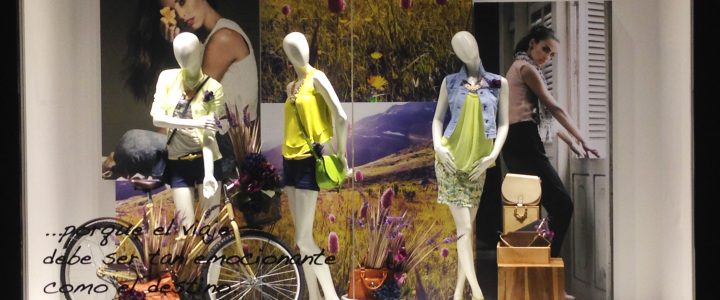
Many years have passed since the first mannequin in history emerged, replicating the silhouette and making everything it wears appealing. Now we can see that it's relatively easy for a store to find an affordable mannequin, but it's difficult to create a striking silhouette. Many mistakes are made when handling them. Here we list the five most important points when setting up a display with mannequins.
1. LOVE ME TENDERMost mannequins are made of fiberglass, which is very resistant to the passage of time, but it's also a delicate material. You have to be careful when dressing a figure. The first thing to do is clean the place where the assembly will take place, and of course, keep your hands clean. Never undress a mannequin if you don't know where you're going to put its pieces.
2. ASSEMBLY AND DISASSEMBLYAlways ensure that the people who handle the mannequins know how to dress and undress them, not just those specialized in visual merchandising, as this is where the pieces can become damaged. It's also important to plan the clothing options for dressing them with a defined and effective concept.
3. WITHOUT STRATEGY THERE IS NO PARADISETo attribute a percentage of sales to mannequins, it's necessary to understand the sales strategy you're trying to capture, and this metric is essential for understanding the lifespan of the mannequin. It's important to keep in mind that mannequins help drive what we want to sell, but we can't attribute sales success or failure to a mannequin alone.
4. COMPOSITION, COMPOSITION & COMPOSITION. Sometimes the budget for display is limited, and brands choose to present only two or three window displays per year. Others are more dynamic, making more than 15 or 20 changes per year, experiencing spikes in traffic, sales, etc. What truly enriches window displays in any strategy is the position of the mannequins in the space. If you have a limited budget, you should rely on different compositions throughout the life of the display, as well as different outfits. The window design should allow for varied positioning of the mannequins.
5. FITTING IS A MUST HAVE, If the garment doesn't look good on a mannequin, we can't expect the customer to like it. We have to consider the silhouette we should choose; sometimes the arms or legs are too long for the garment, or the torso has a high waist. It's important to test garments before purchasing our mannequins. The sizes of the garments they should wear are just as important. Remember that the difference is in the details, so observe the silhouette to know which wrinkles need to be framed and which garments need to be molded to make it look as realistic as possible.
We can list more aspects that the mannequin's composition should have, taking them into account in detail, keeping in mind that the more detailed the setup, the more impactful the message. Be consistent with what you display and the environment, and you'll have a doubly powerful and memorable display.

